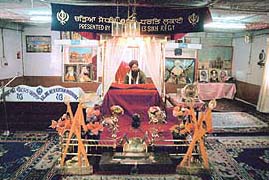Sultanpur Lodhi will be the first place in Punjab to be on the world religious tourism map because of its sanctity and heritage value. This was disclosed by Chief Minister of Panjab. The CM also paid obeisance at Ber Sahib gurdwara on the occasion of the prakash purb of Guru Nanak Dev.
Representatives of the World Tourism Organisation had visited Punjab to identify places that have religious importance and Sultanpur Lodhi had been identified as a befitting place to be on the map. No place could hold more importance since this is where the Guru attained enlightenment, he pointed out.
At present, the Tourism Department is implementing a Rs 3.61-crore project to promote tourism in the Kapurthala - Sultanpur Lodhi tourist circuit and the ecological restoration of the Pavitar Bein project has been expedited. Keeping in view the religious value of this holy town, the government had initiated a series of steps to develop the city under the guidance of the newly constituted Sultanpur Lodhi Development Board. The infrastructure, health facilities and transport connectivity of this historic town would also be upgraded which would further boost sikh religious tourism.

